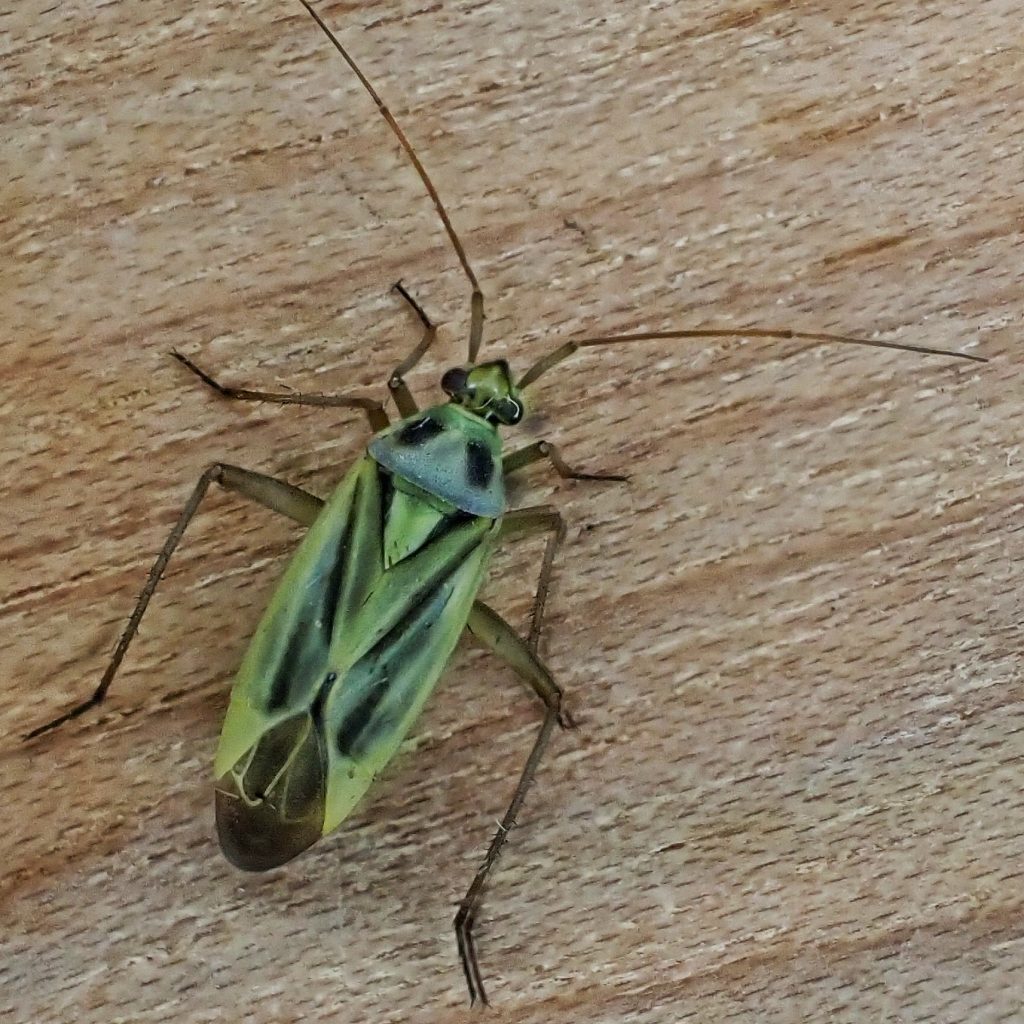
When I was sitting on my stool alongside the Burnt Bridge Creek trail trying to identify the Phacelia nemoralis that I recently profiled, I felt a little tickle on my left arm, and glanced down to see this little mirid crawling along my skin. At first I thought it might be another Campyloneura virgula like I found last summer, but I thought I remembered that as having an all black head (which it does). So I dug out an insect container with my free hand, being careful not to disturb my visitor, and captured her (I can now say it’s a her because the females have lighter markings).
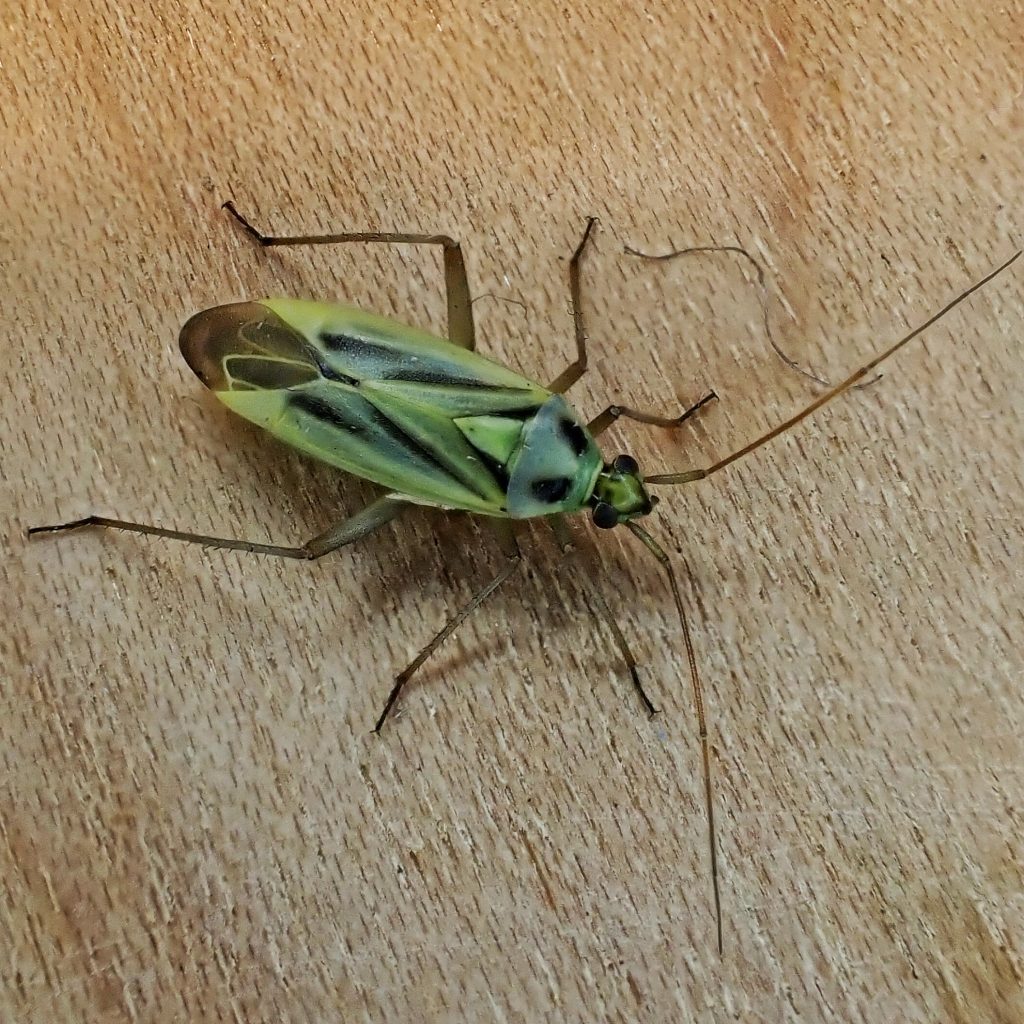
I couldn’t find anything in the Miridae section of PNW Insects that looked quite like this bug, and I even paged through all of the true bugs to no avail, so I took her home and put her in the fridge, before taking some closeup photos. After cropping and editing those, I ran them through my Seek app and right away got a hit on Stenotus binotatus. I didn’t actually key this out, but this is the only member of that genus in North America, and I scanned a bunch of related species on BugGuide, as well as checking out similar species mentioned on some websites (and I did find it mentioned in PNW Insects, but only in comparison to other species and never illustrated) so I feel pretty good that I got the correct identification.
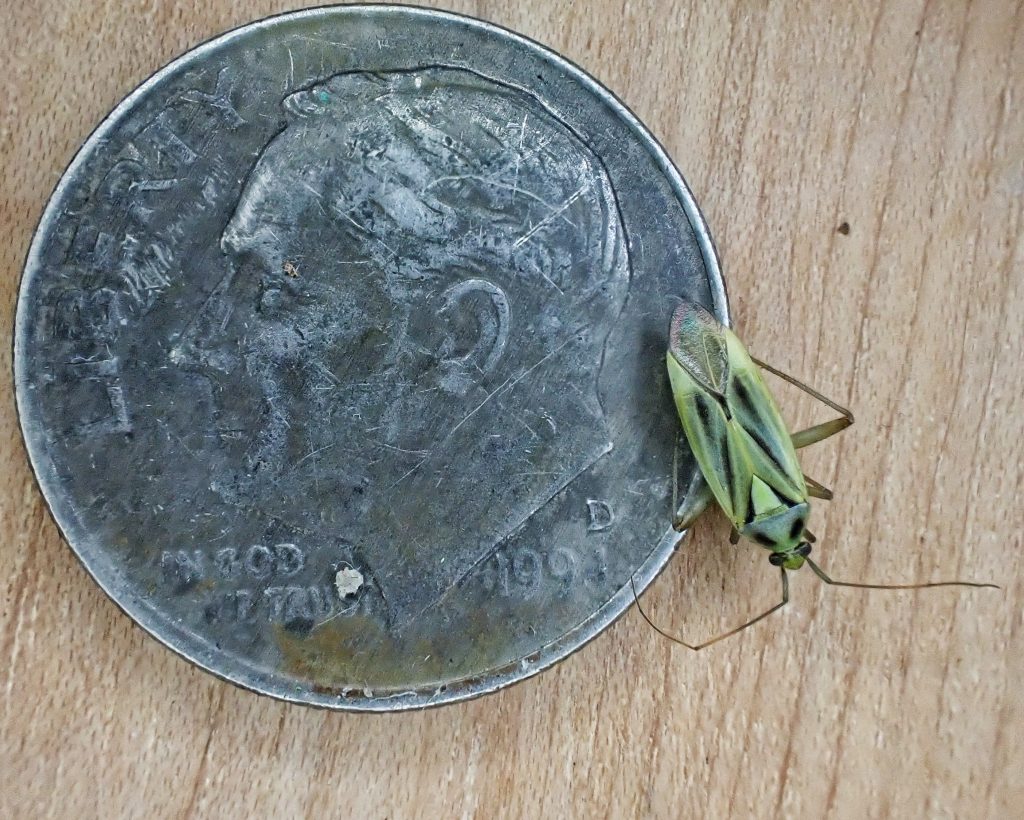
Two-spotted grass bugs are not native to this continent, but they have been in North America since at least 1878, and were first found in Massachusetts. “It can be a pest of crops such as wheat because they deposit salivary enzymes into the immature wheat grains while feeding. These enzymes survive in the harvested wheat. In baking they destroy the gluten structure of the dough, reducing the quality of the bread.” Phil Bendle Collection:Bug (Two-spotted Grass Bug) Stenotus binotatus – CitSciHub . But this gal had probably been feeding on the reed canary grass that’s abundant in that area, and that makes it a beneficial insect in my book.

Description– “6-7.5 mm…overall light greenish or yellowish; front of head black, top of head green; pronotum with two large black spots shaped like elongated semicircles with a straight edge anteriorly; each hemelytron with two oblique black streaks, the more distal streak extending to inner angle of cuneus; scutellum unmarked, bordered laterally by black, and usually brighter than pronotum or hemelytra; cuneus unmarked; membranous tips of hemelytra blackish, giving the bug a “black-tailed” appearance.” Species Stenotus binotatus – Two-spotted Grass Bug – BugGuide.Net ; males are darker overall than females, with larger black marks on pronotum, and both sexes have brownish legs
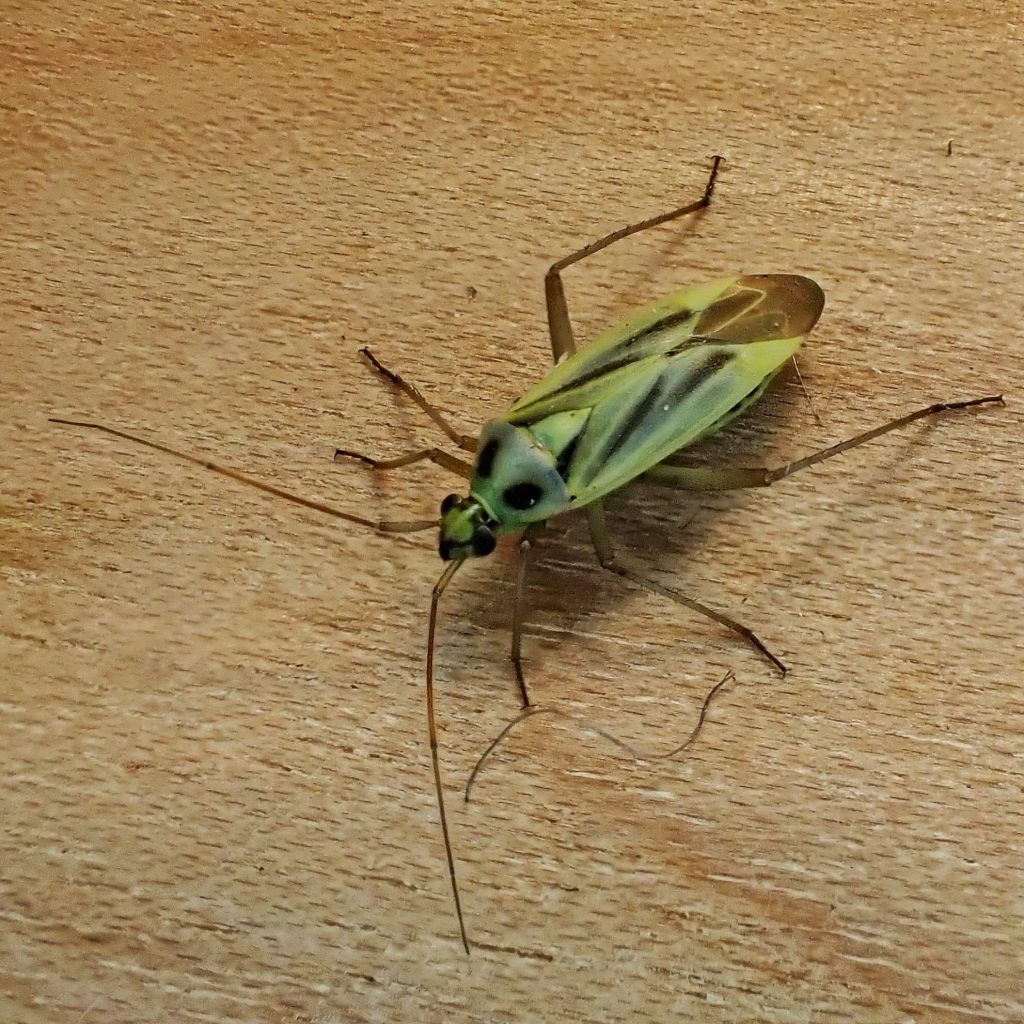
Similar species– Leptopterna spp. lack black spots on pronotum, have black on top of their head; Closterotomus norwegicus has tiny dots on pronotum, and lack black border to scutellum; Adelphocoris lineolatus lacks black markings on hemelytra, has smaller dots on pronotum; Campyloneura virgula has all black head, yellow legs, and the black spots are at the rear of the pronotum.
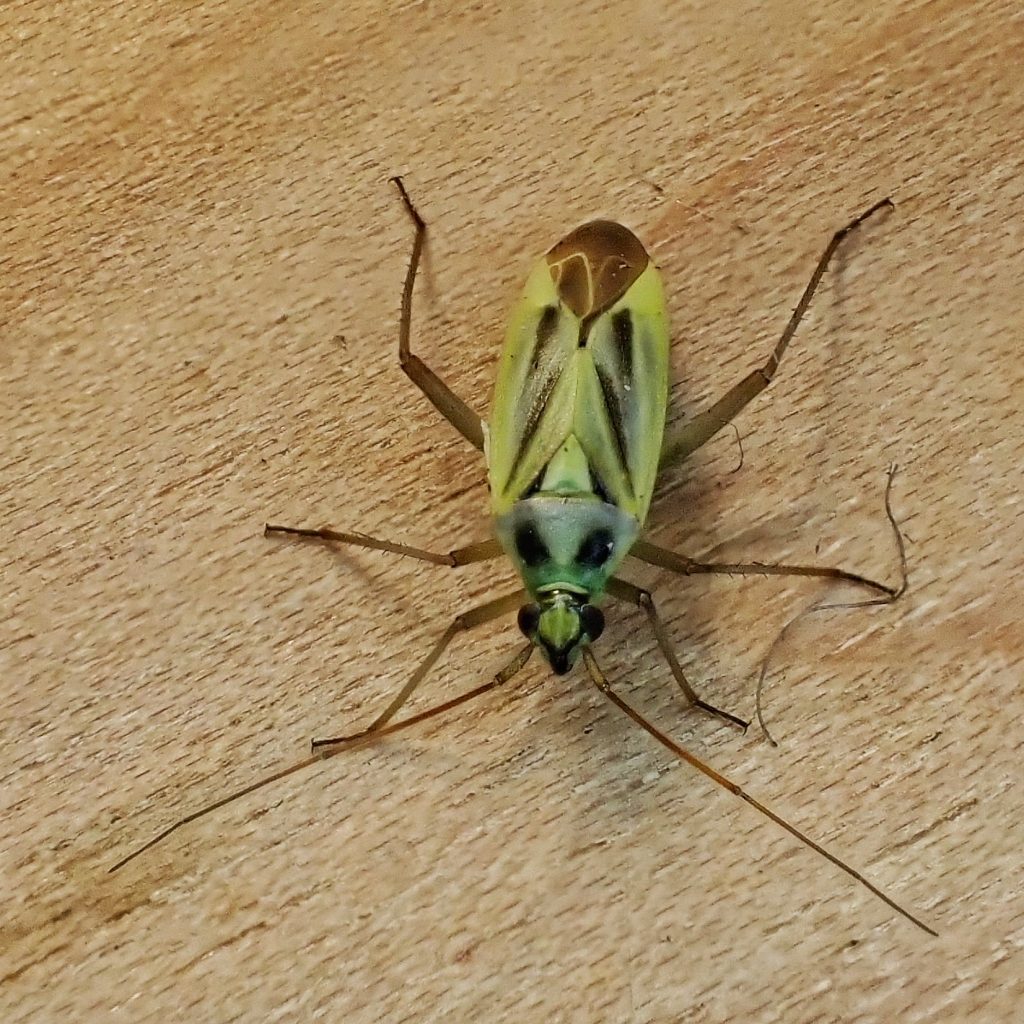
Habitat– Grasslands, fields, road edges, forest openings and edges; anywhere there are their food plants.
Range– “native to most of the Palearctic but has been introduced to temperate regions around the world. It is common “throughout the northern and central U.S. and southern Canada”,[3] and it has been introduced to New Zealand,[4] where it is now found almost throughout the country.” https://en.wikipedia.org/wiki/Stenotus_binotatus; probably more or less region wide in the PNW
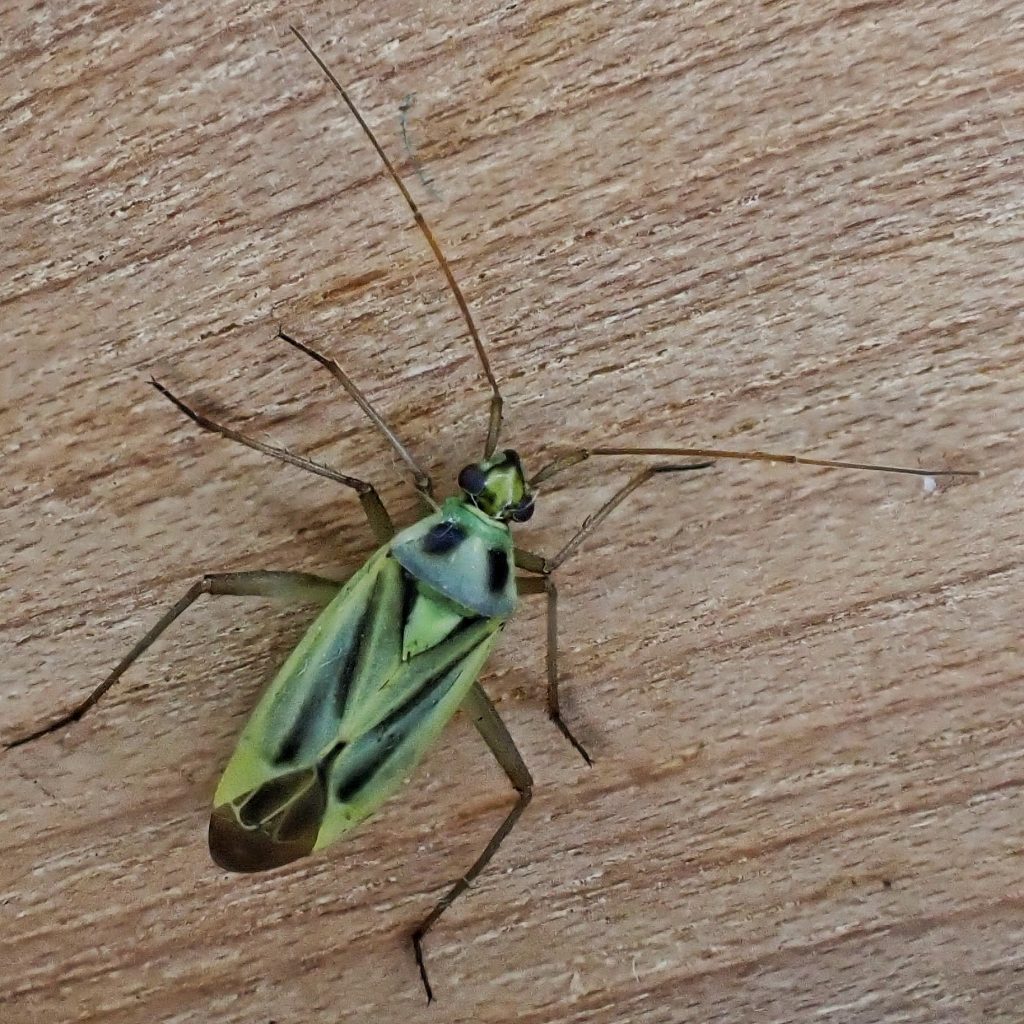
Eats– “Both the nymphs and adults feed on the inflorescences of grasses, especially timothy-grass (Phleum pratense).[2] In New Zealand, S. binotatus has been collected from a large variety of plants, including the grasses brown top, Yorkshire fog, cocksfoot, wheat, barley and maize, and many other plants (including rushes, Hypericum, Leptospermum scoparium, Metrosideros, Nothofagus, Coriaria, Olearia, Muehlenbeckia, Carmichaelia, Larix decidua, Eucalyptus, Melicytus ramiflorus, Coprosma robusta, hemlock and nettles).” https://en.wikipedia.org/wiki/Stenotus_binotatus
Eaten by– Larvae are parasitized by various nematodes, and braconid wasps in the genera Peristenus and Leiophron, and adults are parasitized by some tachinid flies in the genus Phasia; presumably preyed upon by insectores of all classes.
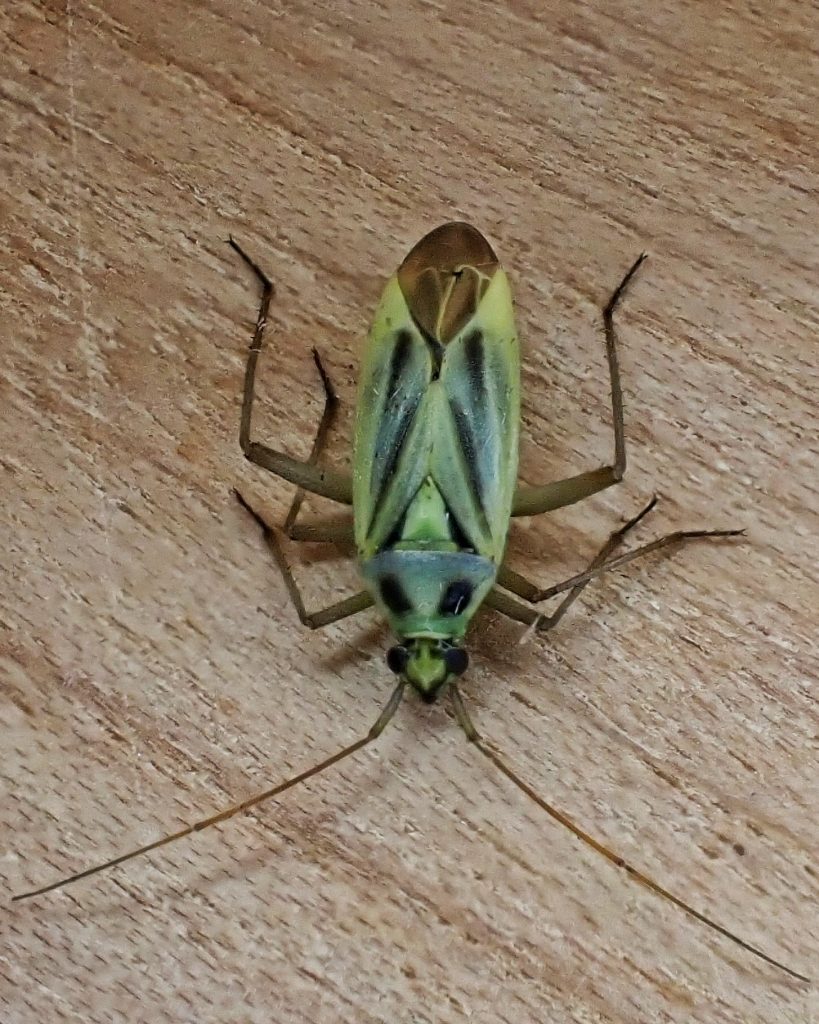
Life cycle– “First instar nymphs of S. binotatus appeared in mid-June after the eggs had passed through a cold winter and a warmer May and early June, and the adults disappeared by mid-August after oviposition. This period corresponds very well to the ear stage of orchard grass (from the appearance of ears to the withering). The eggs laid in August never hatched before winter, but seemed to go into diapause for overwintering. Thus the life cycle of the bugs may bear a very close relation to the growing process of orchard grass.“ Hori, et al (1985) https://www.jstage.jst.go.jp/article/aez1966/20/1/20_1_13/_pdf
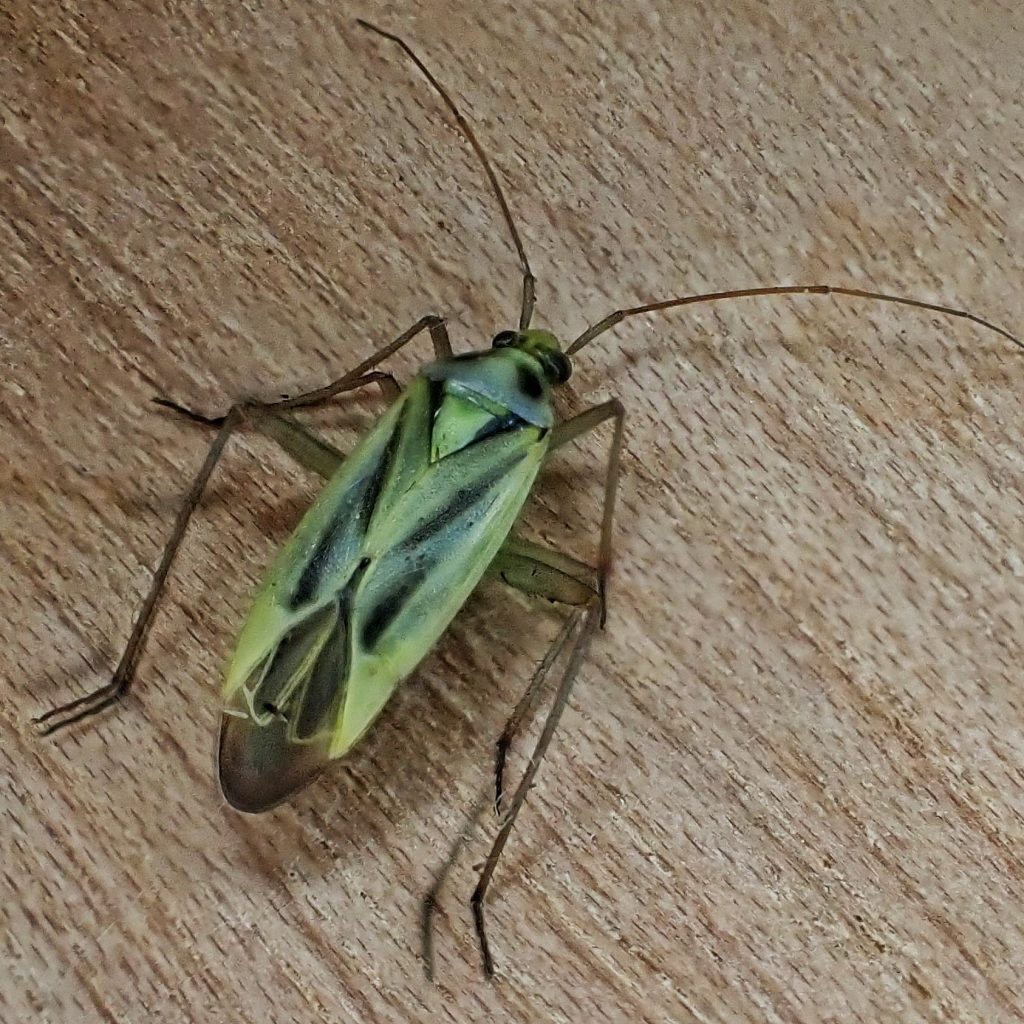
Adults active– June into August
Etymology of names– Stenotus is from the Greek word for narrow, and refers to the shape of this bug. The specific epithet binotatus is from the Latin word for ‘two marked’ referring to the two obvious black marks on the pronotum of this species.
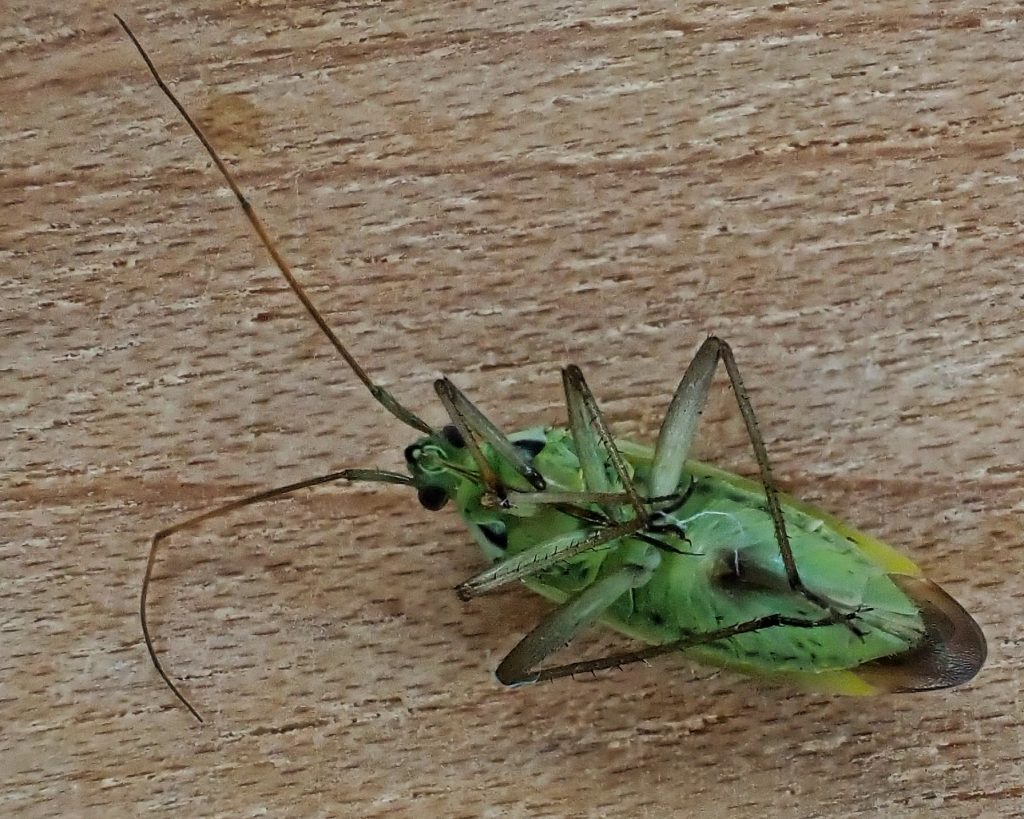
Species Stenotus binotatus – Two-spotted Grass Bug – BugGuide.Net
Minnesota Seasons – two-spotted grass bug
Phil Bendle Collection:Bug (Two-spotted Grass Bug) Stenotus binotatus – CitSciHub
https://www.jstage.jst.go.jp/article/aez1966/20/1/20_1_13/_pdf
https://www.jstor.org/stable/25010139
https://en.wikipedia.org/wiki/Stenotus_binotatus
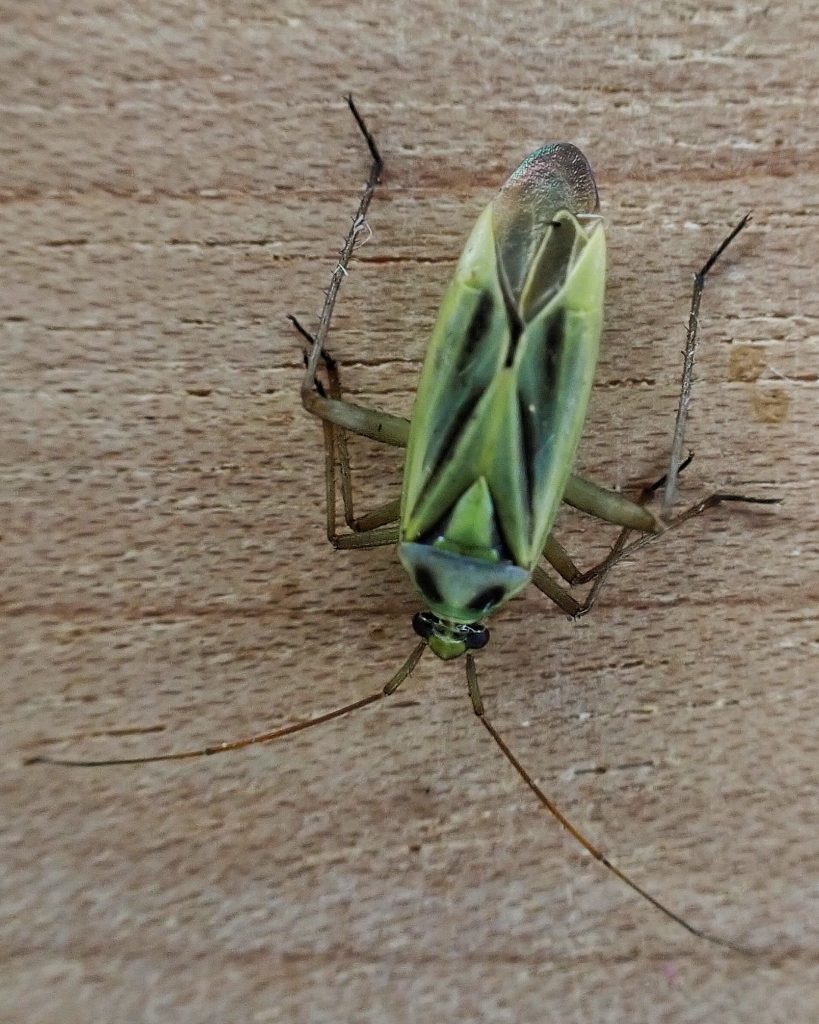
Heh, my main takeaway is that the next time I bake a less-than-stellar loaf I’m just gonna blame it on the two-spotted grass bugs. That’s my story and I’m sticking with it!
Sounds good to me, Kat!